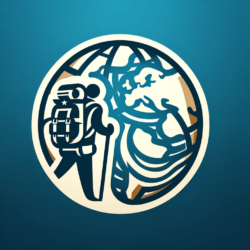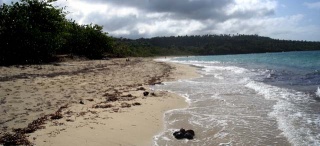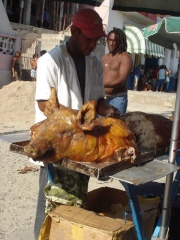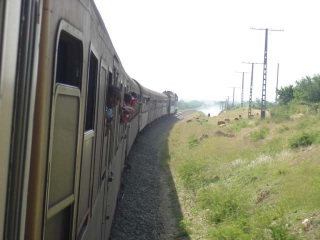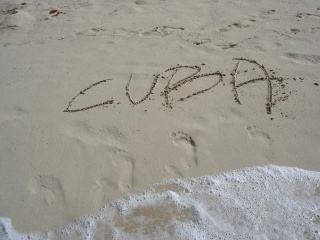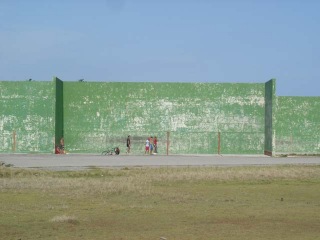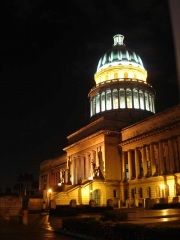26th of April 2007, Arriving in Santiago de Cuba
One thing we learned the hard way in Cuba was to always ask for a price before doing business with the locals, such as taxi drivers, landlords etc. . A short distance from the train station to our accommodation turned out to be a pricy one as we were charged 12 Cucs. The bicitaxy driver even asked for more in the beginning but Severin managed to haggle him down. Well, lesson learned!
The center of Santiago is really nice and we enjoyed another Mojito and a cigar at a restaurant right next to the church. A Cuban dressed up like a Super-Pimp and a fancy cane posed for tourists to take pictures.
As Santiago also won the follow up game to the one we saw in Havana there was a big celebration in town. Huge crowds where roaming the streets, lots of grilled pigs where offered on the street and you could buy beer in plastic cups for just a few national pesos. The players were greeted and cheered by the crowd and everybody danced to music. Not bad for a nation considers „Third World“.
April, 27th 2007: Santiago de Cuba to Baracoa by Bus
As we were trying to keep moving we decided to leave Santiago de Cuba after just one night and take a bus to Baracoa, a little town at the very south end of Cuba. Baracoa was the first Spanish settlement and first Capital of Cuba and was not reachable by land until 1960. The road from Santiago to Baracao is magnificent, winding through an amazing mountain range- It took us about 5 hours to get there, with a short stop at the infamous Guantanamo Bay. Luckily, we also got to know Merete, a Norwegian Salsa Teacher whom we would meet up throughout our trip.
After our arrival around lunch time we visited the center of the city, home of the monument of “Hatuey”, Cuba’s First National Hero. This Che Guevara of the 16th century leaded a group of natives in a fight against the invading Spanish conquistadores. As we all know, today Spanish is the first language in Cuba, which means Hatuey was unsuccessful. Actually, he was captured and burned rejecting the offer to go to catholic heaven because there where to many Spaniards up there.
Later during the day we decided to go to Boca de Miel, a little village about 30 minutes from Baracoa and spend some time Playa Blanco. A nice little beach , only about 5 meters broad, surrounded by sharp rocks. On our way back to Baracoa a family in Boca de Miel invited us to dinner the following night (of course to earn a few Peso Convertible). Like for most of the Cubans, it would have been against the law for the family to invite us for dinner to their home, so they where cautions to not be seen talking too much to us.
At night we joined Merete, and Laoise, a girl from Ireland on a night out of dancing and drinking at the local Casa de la Trova and a few beers at a club called “El Rancho” after the group of young men stopped playing at the Casa de la Trova. The club is just a bit outside of Baracoa on top of the hill ”. El Rancho turned out to be “hot spot” for locals and tourists alike, but the Casa de La Trova became one of my favorites locations on the trip.
